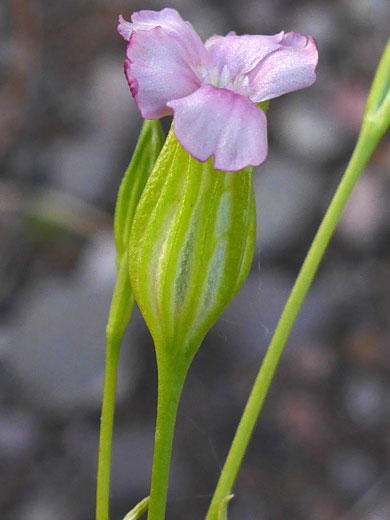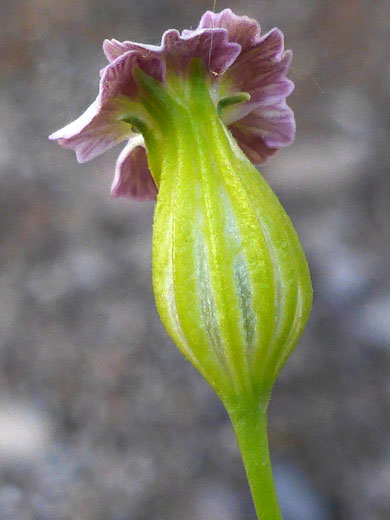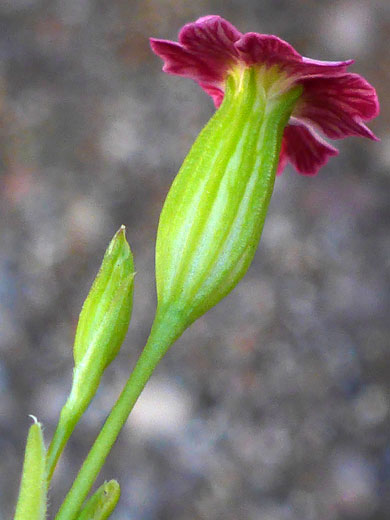Common name:
Sleepy catchfly
Family:
Scientific name:
Silene antirrhina
Main flower color:
Range:
Al the western states
Height:
Up to 30 inches
Habitat:
Waste and disturbed ground, roadsides, open woodland, fields, riversides, wildfire areas, from sea level to 7,500 feet
Leaves:
Opposite, oblanceolate to linear, entire, up to 3.5 inches long
Season:
April to July
In the West, silene antirrhina occurs in all the states but is most widespread in Arizona and southern California. It grows in a variety of habitats, generally dry places, and is quite variable in characteristics, depending on levels of sun and moisture, and the soil composition.
Stems, which may be branched or not, are slender, and mostly hairless; sometimes with short, fine hairs towards the base. Leaves are oblanceolate at the base, more linear up the stem, finely hairy, and often slightly folded along the midvein. The stem around the nodes is sticky, sometimes causing insects to become trapped.
The hairless flowers are formed of a ten-ridged calyx, narrowly bell-shaped in outline, with small green or pinkish lobes at the tip, and a pinkish-white corolla that opens to five petals, shallowly divided into two lobes. Stamens (ten) and styles (three) are included. Occasionally the petals are absent.
Stems, which may be branched or not, are slender, and mostly hairless; sometimes with short, fine hairs towards the base. Leaves are oblanceolate at the base, more linear up the stem, finely hairy, and often slightly folded along the midvein. The stem around the nodes is sticky, sometimes causing insects to become trapped.
The hairless flowers are formed of a ten-ridged calyx, narrowly bell-shaped in outline, with small green or pinkish lobes at the tip, and a pinkish-white corolla that opens to five petals, shallowly divided into two lobes. Stamens (ten) and styles (three) are included. Occasionally the petals are absent.
All Contents © Copyright The American Southwest | Comments and Questions | Contribute | Site Map




